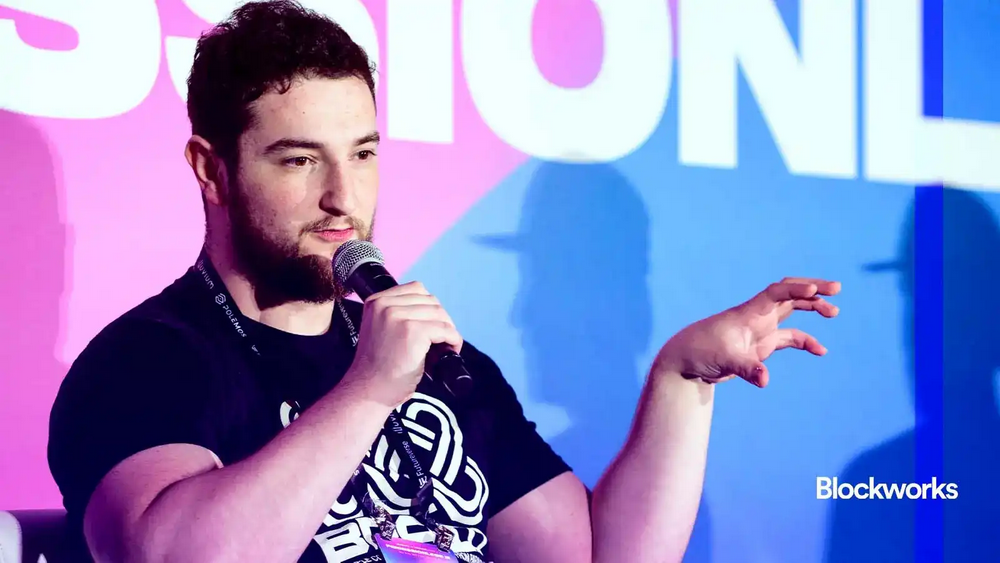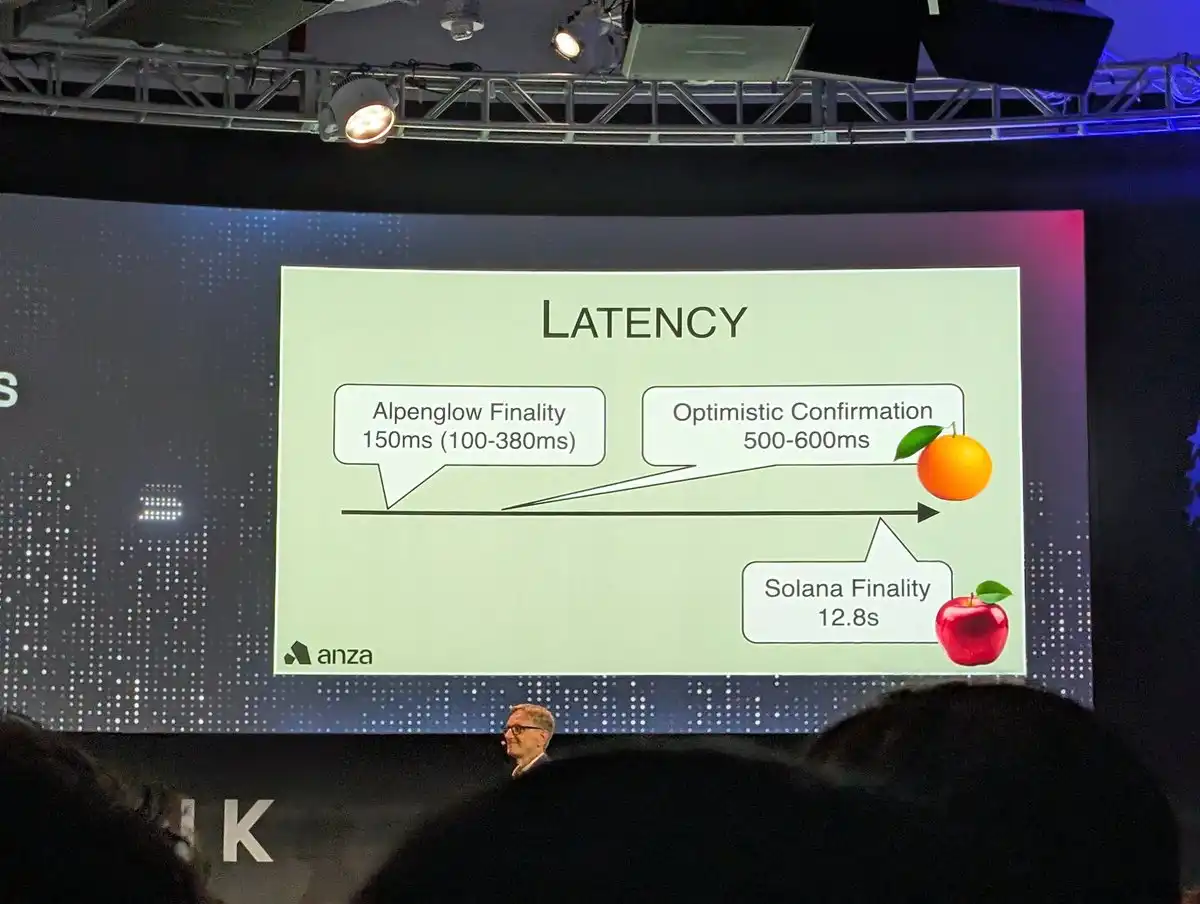On May 20, 2025, Anza, a company founded by Solana Labs executives and core engineers, announced a plan called Alpenglow , which is hailed as "the biggest change in the history of the Solana core protocol." This new architecture will replace the existing TowerBFT consensus mechanism and historical proof timestamp system with Votor and Rotor components, with the goal of making Solana a high-throughput Layer-1 blockchain faster, more stable, and competitive with Internet infrastructure.
The two most important points of this Solana transformation are as follows.
Innovation of Votor consensus mechanism: Votor replaces TowerBFT and adopts a more efficient direct communication mode, accelerating block confirmation through a parallel voting mechanism. When 80% of the staking nodes agree, the block can be confirmed within one round; when the staking ratio is 60%, two rounds of confirmation are required. This design shortens the block processing time to 100-150 milliseconds, significantly improving transaction speed and network scalability.
Rotor Block Propagation Optimization: Rotor improves the Turbine system to improve block propagation efficiency through single-layer relay nodes and pledge-based bandwidth optimization. Combined with erasure coding technology, Rotor ensures that block data can be distributed quickly and reconstructed from partial data fragments, further enhancing the performance and stability of the Solana network.
How big of a deal is it to change the consensus mechanism?
The consensus mechanism is the core pillar of blockchain technology, which directly determines the security, efficiency and decentralization of the network. Its significance of change is a milestone in the history of blockchain development. Solana's existing TowerBFT consensus mechanism is known for its high throughput, but with the rapid expansion of the network scale, it faces challenges in transaction congestion and resource allocation efficiency.
Anza's Alpenglow initiative aims to address these pain points and further unlock the potential of the network by completely reshaping Solana's consensus mechanism through the introduction of Votor and Rotor components. Anza core team members Quentin Kniep, Kobi Sliwinski, and Roger Wattenhofer declared in the white paper: "The release of Alpenglow will be a turning point for Solana. It is not only a new consensus protocol, but also a key step for Solana to move towards Internet infrastructure-level competitiveness."
The scale and impact of this change are comparable to Ethereum's historic transition from Proof of Work (PoW) to Proof of Stake (PoS). Alpenglow not only optimizes the block proposal and verification process and reduces transaction latency, but also improves the network's decentralization and anti-attack capabilities by redesigning the economic incentive mechanism.
More importantly, it opens up new possibilities for Solana. Supporting higher transaction throughput, lower fees, and a wider range of application scenarios, from DeFi to the full outbreak of Web3 applications. The success or failure of this transformation will directly determine whether Solana can gain the upper hand in the competition with Ethereum, and even challenge the status of traditional Internet infrastructure. As Anza envisions, Alpenglow is not just a technology upgrade, but to make Solana the cornerstone of the next generation of the Internet and redefine the role of blockchain in the global digital economy.
Alpenglow project launch event, source: X
Originating from the core circle of the Solana Foundation, what is the origin of Anza?
Anza's story begins in the core circle of Solana Labs. It is a company spun off by Solana Labs executives and core engineers in 2023. As the original developer of the Solana blockchain, Solana Labs focuses on the underlying design of the protocol and the early expansion of the ecosystem. However, with the rapid growth of the Solana network, the transaction volume has surged and network congestion has become a prominent problem. The ecosystem needs a more flexible and focused entity to meet technical challenges and accelerate innovation.
Anza was born. The original intention of the spin-off was to build a next-generation development shop centered on Solana, focusing on core engineering, validator client optimization, and the widespread application of the Solana Virtual Machine (SVM), so as to promote the long-term development and competitiveness of the ecosystem without dispersing the core resources of Solana Labs.
Anza's team is composed of a group of top talents in the blockchain field, with core members including Quentin Kniep, Kobi Sliwinski and Roger Wattenhofer. Quentin Kniep is an engineer who has been deeply involved in distributed systems and high-performance computing for many years. He has led the core protocol optimization work at Solana Labs and is good at turning complex technologies into practical solutions. Kobi Sliwinski is known for his expertise in consensus mechanisms and network architecture design. He contributed key code to the development of TowerBFT in the early days of the Solana ecosystem. Roger Wattenhofer, as a researcher with profound influence in both academia and the blockchain industry, his rich experience in distributed computing and cryptography provides theoretical support for Anza's technological innovation. The combination of this team, which combines the multiple advantages of engineering, research and productization, makes Anza a technological pioneer in the Solana ecosystem.
In fact, before Alpenglow, Anza was very active last year. On January 30, 2024, Anza announced the development of the Agave validator client, a project forked from the Solana Labs validator client, which aims to maximize network uptime and pave the way for the launch of other clients. Faced with the congestion problems encountered by the Solana network during its rapid growth, Anza released a patch version V1.17.31 in April 2024, and plans to continue to optimize in the subsequent V1.18 version. They work closely with core contributors to continue to develop fixes for bottlenecks in the QUIC protocol and the Agave client under high load.
Ethereum Foundation’s “Refugee Camp”
Anza's appeal lies not only in its technological innovation, but also in its magnetic effect of gathering top talents. In December 2024,Max Resnick, a well-known Ethereum researcher in the blockchain field, jumped to Anza. Resnick is famous for his "sharp comments" on the Ethereum expansion roadmap. He believes that Ethereum relies too much on Layer-2 solutions and should focus on optimizing the base layer.
Encouraged by Solana co-founder Anatoly, Resnick spent three months on the decision and finally chose to join Anza. His arrival was regarded as a "major victory" by the Solana community, and even Ethereum co-founder Joseph Lubin welcomed it, believing that it would promote the collision of ideas between the two ecosystems.
At Anza, Resnick’s goal is clear. In his first 100 days after joining, he focused on optimizing Solana’s fee market and consensus mechanism, while delving into the core operation of the protocol. He proposed a “moon landing plan” - introducing a “multi-leader” mechanism to break the current model of Solana and Ethereum’s single leader proposing blocks.

Ethereum researcher Max Resnick, image source: Blockworks
In Resnick's view, a single leader has too much economic power, which leads to inefficient protocols, while a multi-leader competition mechanism will reduce the extraction of economic value and significantly improve network efficiency. He admitted that Solana's culture is more open and dares to accept unconventional ideas, while Ethereum is often held back by "political resistance." Resnick even said bluntly: "Ethereum's culture is deeply influenced by core developers, and those who want to do things have to adjust their ideas to preserve political capital." This cultural difference prompted him to choose Solana, believing that it is more suitable for realizing his technical vision.






